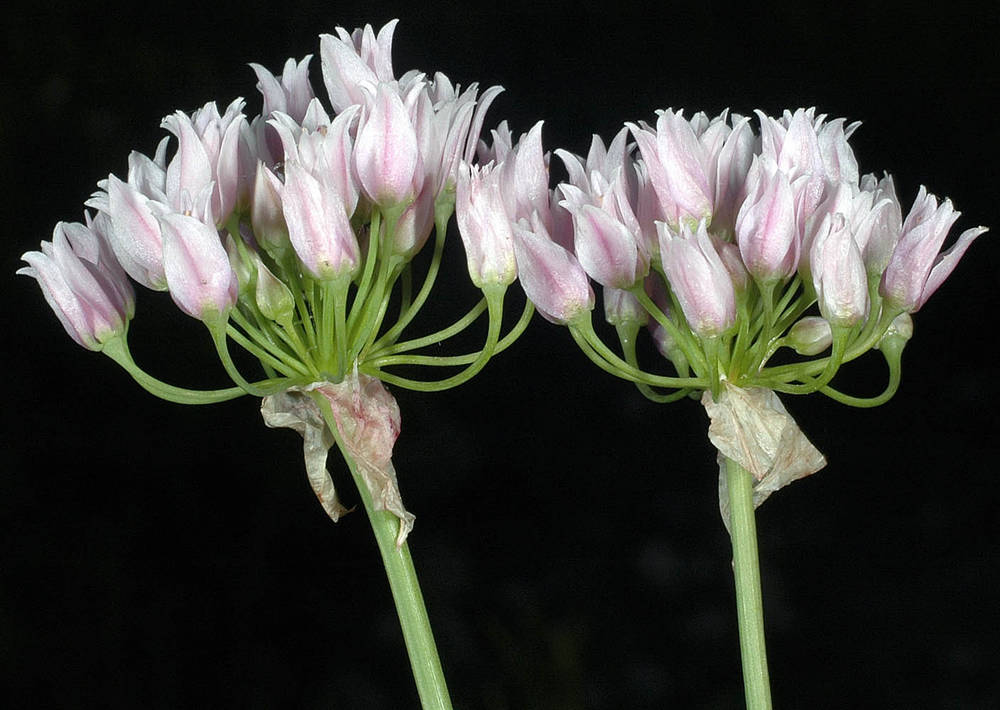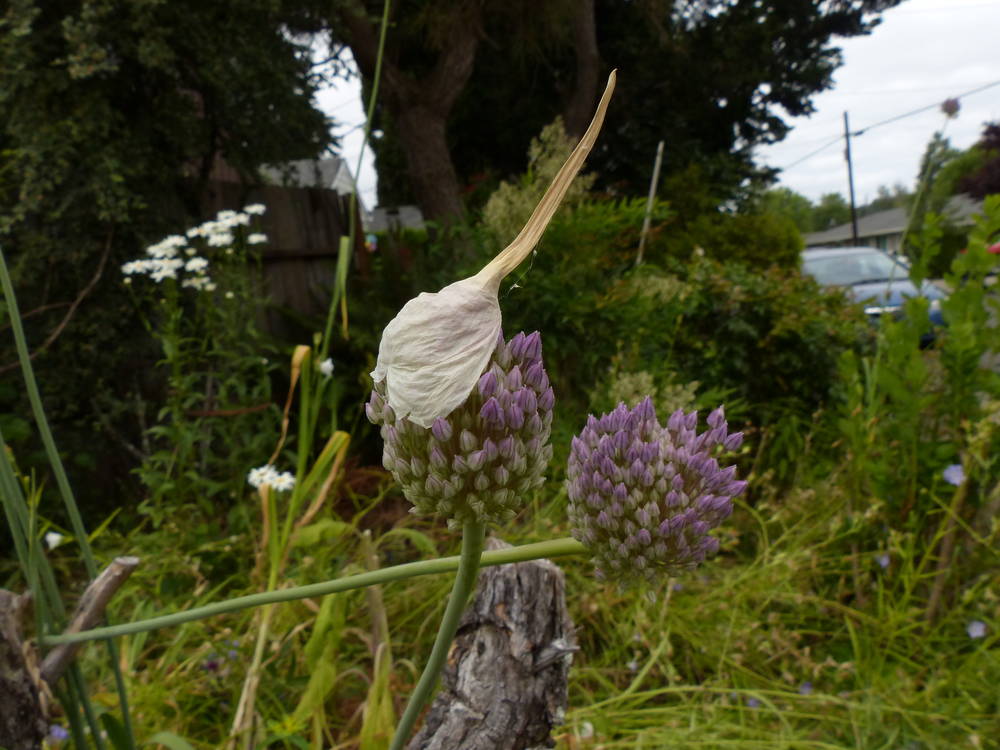Allium geyeri
Allium ampeloprasum
Geyer's onion
elephant garlic, wild leek
2–10+; ovoid or slightly elongate;
outer coats enclosing 1 or more bulbs, reticulate;
cells rather coarse-meshed; open, fibrous.
1–3+; variable; some poorly developed; others ovoid with 1–2 large bulbs and several bulbils at base;
outer coat enclosing 1 or more bulbs, membranous.
persistent, usually green at anthesis, usually 3–5;
blades solid; more or less straight; flat, channeled; (6)12– 30 cm × 1–3(5) mm.
withering from tips by anthesis, 6–9;
blades solid; flat, channeled, 1–5 × 2–20(30) mm.
persistent; solitary; erect; terete or somewhat 2-angled, 10–50 cm × 1–3 mm.
persistent; solitary; erect; hollow; terete, 45–180 cm × 3–7 mm.
persistent; erect; compact, 10–25-flowered, hemispheric to globose, not producing bulbils, or 0–5-flowered, largely replaced by ovoid, acuminate bulbils;
pedicels becoming rigid and stiffly spreading in fruit, 8–13 mm;
spathe bracts 2–3.
persistent; erect; compact; to 500-flowered; few-flowered in variants with bulbils, globose;
pedicels 15–50 mm;
spathe bracts 3–5.
(4)6–8(10) mm;
tepals erect or spreading; ovate to lanceolate; more or less equal, pink to white;
margins often obscurely toothed;
apex obtuse to acuminate;
stamens included;
ovary when present, inconspicuously crested with 3–6 low processes;
stigma unlobed or obscurely lobed.
4–5.5 mm;
tepals erect, white, pink, or dark red;
outer tepals oblong-lanceolate;
margins entire;
apex obtuse, sometimes mucronate;
inner tepals narrowly ovate to spatulate;
margins entire;
apex obtuse;
stamens equaling perianth or exserted;
ovary crestless;
stigma scarcely thickened, unlobed.
Allium geyeri
Allium ampeloprasum
2 varieties.
Roadsides and other disturbed areas. Flowering Apr–Jul. 0–50 m. Est. Occasionally escaped in North America; North Africa, Asia, Europe. Exotic.
This species may be conspecific with the cultivated leek A. porrum.
Nick Otting, Richard Brainerd, Barbara Wilson
Nick Otting, Richard Brainerd, Barbara Wilson
- Local floras:
BC,
OR,
WA
- Local Web sites:
Flora NW,
PNW Herbaria
WildflowerSearch
iNaturalist (observations)
USDA Plants Database
- LBJ Wildflower Center
- SEINet
- Plants of the World Online
- Encyclopedia of Life
- Wikipedia
- Google Image Search





